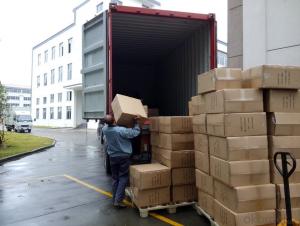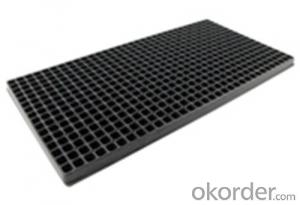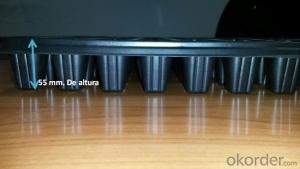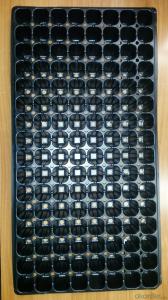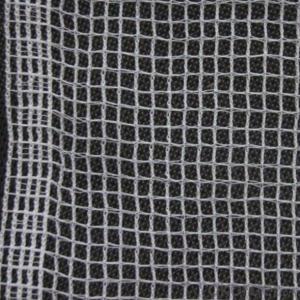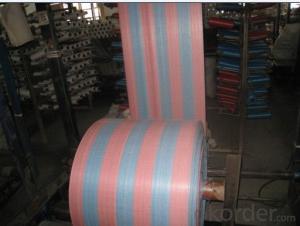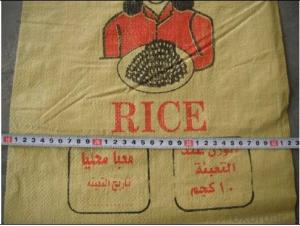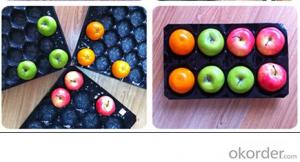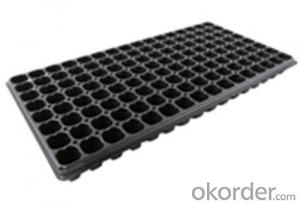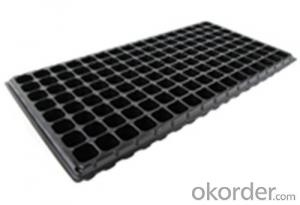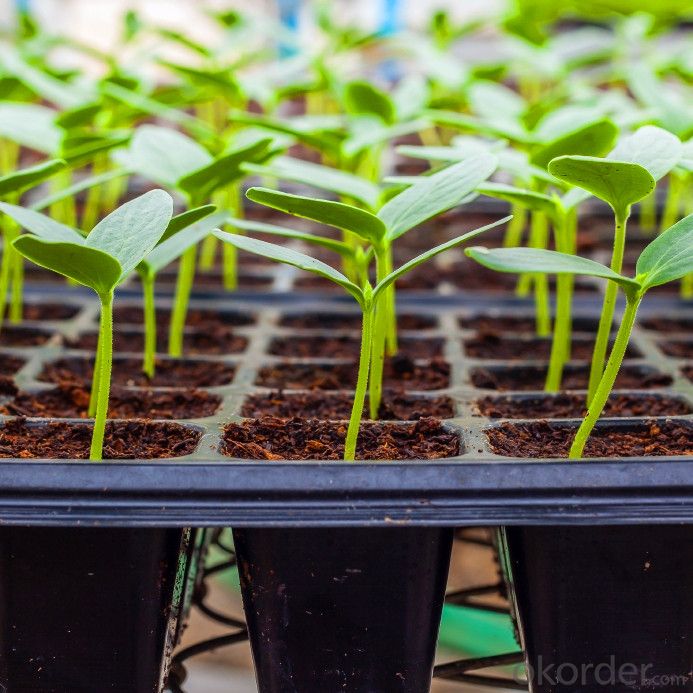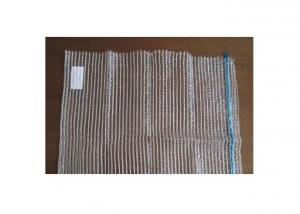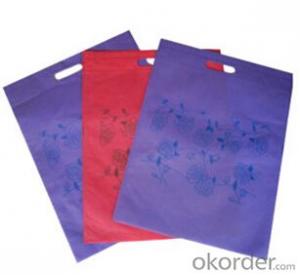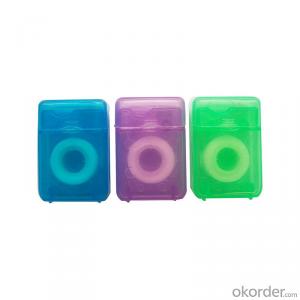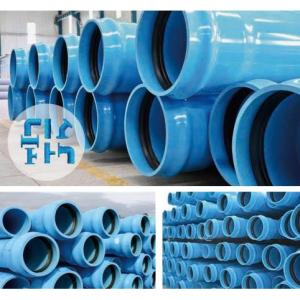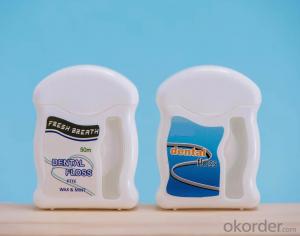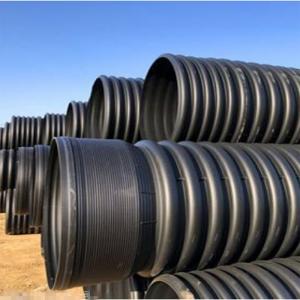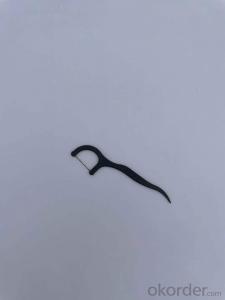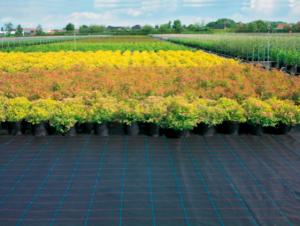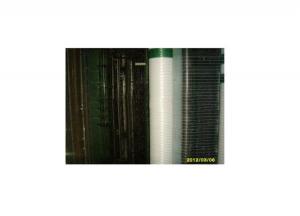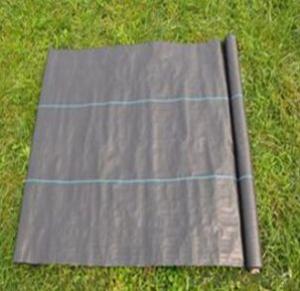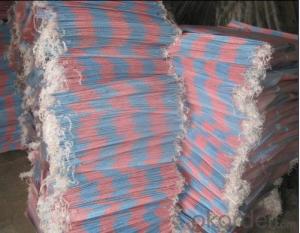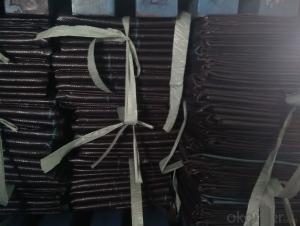Square Nursery Seeding Tray PS Seed Tray Plastic Tray
- Loading Port:
- China main port
- Payment Terms:
- TT OR LC
- Min Order Qty:
- 3000 pc
- Supply Capability:
- 10000000 pc/month
OKorder Service Pledge
OKorder Financial Service
You Might Also Like
Structure of the seed tray: · Top quality and competitive price. · Variety design and good appearance. · Easy to use, and remove. · Durable and reusable. · Eco-Friendly.
Advantages: · Top quality and competitive price. · Variety design and good appearance. · Easy to use, and remove. · Durable and reusable. · Eco-Friendly.
Application: · Ideal for Starting seeds and Transplanting Seedling. · Suitable for both manual and automatic planting. · Suitable for Propagating Vegetables, Flowers and other plant from seed · in green-house or indoors.
Description Main Features of the seed tray: · Ideal for Starting seeds and Transplanting Seedling. · Suitable for both manual and automatic planting. · Suitable for Propagating Vegetables, Flowers and other plant from seed in green-house or indoors. Using time: · thickness of 0.5mm can be used 1 to 2 times. · thickness of 0.6mm can be used 3 to 4 times. · thickness of 0.7mm can be used 5 to 6 times. · thickness of 0.8mm can be used 7 to 8 times. · thickness of 0.9mm can be used 8 to 9 times. · thickness of 1.0mm can be used 8 to 10 times. Thickness vs. Weight: · Thickness of trays are from 0.5mm to 1.0mm. · 1.0mm: 155g±5g; 100pcs/ctn. · 0.9mm: 140g±5g; 120pcs/ctn. · 0.7mm: 110g±5g; 150pcs/ctn. · 0.6mm: 95g±5g; 180pcs/ctn. · 0.5mm: 80g±5g; 200pcs/ctn.
FAQ: Q:How Can I Get A Sample? A:You can get samples by communicate with our export sales. Q:How Long Is Delivery? A:Delivery time will be 7-25 days according to order quantity. Q:What Is The MOQ? A:Our MOQ is 1*20FT container quantity, allow to mix several items. Q:What Is Our Normal Payments Terms? A:Our normal payment terms now is T/T, L/C or Western Union,Papal. Q:How Do I Order Your Products? A:You can check our website for any items you interest and you can also get communication with our export sales and order for it accordingly. Q:What Kinds Of Material We Use In Our Product? A:Our plastic flower pots use material such as PP polymer or PE polymer.
|
- Q:How do you prevent ground cover plants from spreading too aggressively?
- One effective method to prevent ground cover plants from spreading too aggressively is by regularly trimming or cutting back the plants. This helps to keep them in check and prevents them from spreading beyond their desired boundaries. Additionally, creating physical barriers like edging or installing a root barrier can help contain the plants' growth and prevent them from spreading into unwanted areas.
- Q:What are the advantages of using plastic ground covers in weed control?
- Plastic ground covers offer several advantages in weed control, including suppressing weed growth by blocking sunlight, conserving soil moisture, and providing a physical barrier to prevent weed seed germination. Additionally, plastic covers can help regulate soil temperature, reduce the need for chemical herbicides, and improve overall garden aesthetics.
- Q:Are nursery trays suitable for starting succulent offsets?
- Yes, nursery trays can be suitable for starting succulent offsets. Nursery trays provide a controlled environment for succulent propagation and can help in maintaining the right moisture levels for root development. However, it is important to ensure proper drainage and use well-draining soil to prevent overwatering, as succulents are prone to root rot. Additionally, providing adequate sunlight and gradually acclimating the offsets to outdoor conditions is essential for their successful growth.
- Q:Are agricultural plastic products used in organic fertilization methods?
- No, agricultural plastic products are not used in organic fertilization methods. Organic fertilization methods focus on using natural and organic materials such as compost, manure, and plant-based materials to enhance soil fertility and promote sustainable farming practices.
- Q:What are some ground cover plants that provide a dense mat of foliage?
- Some ground cover plants that provide a dense mat of foliage include creeping thyme, creeping juniper, wintercreeper, pachysandra, and ajuga.
- Q:What is the best ground cover for attracting reptiles and amphibians?
- The best ground cover for attracting reptiles and amphibians would be a combination of native plants and leaf litter. Native plants provide food sources and shelter for these animals, while leaf litter offers hiding spots and moisture retention.
- Q:Do ground cover plants require pruning?
- Yes, ground cover plants may require pruning depending on the specific species. Pruning can help control their growth, promote denser foliage, and prevent them from becoming invasive or overgrown.
- Q:Can ground cover be used to create a deer-resistant landscape?
- Yes, ground cover can be used to create a deer-resistant landscape. Certain types of ground cover, such as creeping juniper, pachysandra, or lamb's ear, have strong scents or textures that deter deer from grazing. Additionally, dense ground cover can make it more difficult for deer to access desirable plants in the landscape. However, it is important to note that no plant is entirely deer-proof, and hungry deer may still browse on ground cover in extreme cases.
- Q:Are there any best practices for using agricultural plastic products?
- Yes, there are several best practices for using agricultural plastic products. Some of these include properly disposing of used plastic materials to avoid environmental pollution, using appropriate plastic materials for specific agricultural applications, following proper handling and storage techniques to maintain the quality and effectiveness of the plastic products, and regularly inspecting and replacing worn-out or damaged plastic materials to ensure optimal performance and safety. It is also recommended to explore alternatives to plastic products wherever possible to reduce plastic waste and promote sustainability in agriculture.
- Q:I just found a plastic knife in one of my drawers, and written on it in raised letters is 100% Compostable.So, from that I understand that if I throw this knife into a compost heap, it will eventually become mulch...but if it stays in my drawer, will in biodegrade on its own? Or will it take hundreds of years?
- It is a plastic made from corn starch or like the previous answerer stated, hemp. It won't disintegrate in your drawer, but it can break down over time (some plastics about a year), which regular plastics don't (half life of closer to 300 years).
1. Manufacturer Overview |
|
|---|---|
| Location | |
| Year Established | |
| Annual Output Value | |
| Main Markets | |
| Company Certifications | |
2. Manufacturer Certificates |
|
|---|---|
| a) Certification Name | |
| Range | |
| Reference | |
| Validity Period | |
3. Manufacturer Capability |
|
|---|---|
| a)Trade Capacity | |
| Nearest Port | |
| Export Percentage | |
| No.of Employees in Trade Department | |
| Language Spoken: | |
| b)Factory Information | |
| Factory Size: | |
| No. of Production Lines | |
| Contract Manufacturing | |
| Product Price Range | |
Send your message to us
Square Nursery Seeding Tray PS Seed Tray Plastic Tray
- Loading Port:
- China main port
- Payment Terms:
- TT OR LC
- Min Order Qty:
- 3000 pc
- Supply Capability:
- 10000000 pc/month
OKorder Service Pledge
OKorder Financial Service
Similar products
New products
Hot products
Hot Searches
Related keywords
